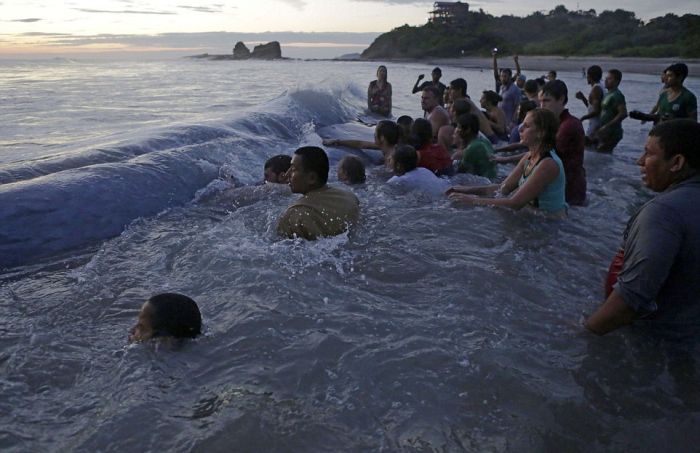|
|
Saving A Whale, Cetacean Stranding, Popoyo Beach, Tola Municipality, Rivas Department, Nicaragua
|
Solitary species naturally do not strand en masse. Cetaceans that spend most of their time in shallow, coastal waters almost never mass strand.
Causes
Strandings can be grouped into several types. The most obvious distinctions are between single and multiple strandings. The carcasses of deceased cetaceans are likely to float to the surface at some point; during this time, currents or winds may carry them to a coastline. Since thousands of cetaceans die every year, many become stranded posthumously. Most whale carcasses never reach the coast and are scavenged or decomposed enough to sink to the ocean bottom, where the carcass forms the basis of a unique local ecosystem called whale fall. Single live strandings are often the result of illness or injury, which almost inevitably end in death in the absence of human intervention. Multiple strandings in one place are rare and often attract media coverage as well as rescue efforts. Even multiple offshore deaths are unlikely to lead to multiple strandings due to variable winds and currents.
|
|









